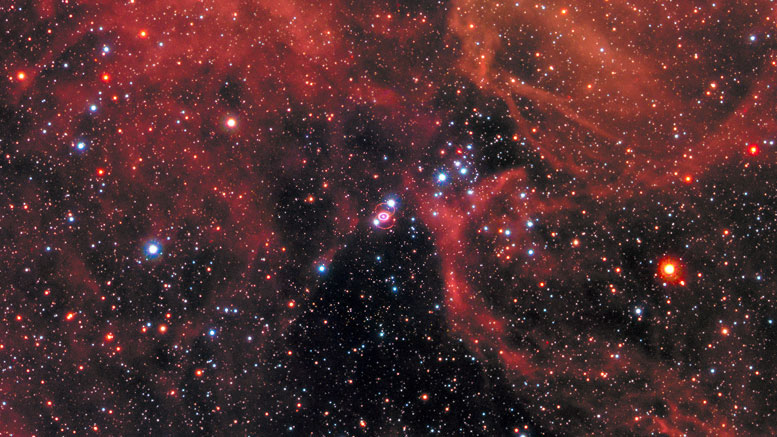
This Hubble Space Telescope image shows Supernova 1987A within the Large Magellanic Cloud, a neighboring galaxy to our Milky Way. Credit: NASA, ESA, and R. Kirshner (Harvard-Smithsonian Center for Astrophysics and Gordon and Betty Moore Foundation) and P. Challis (Harvard-Smithsonian Center for Astrophysics)
By using data from telescopes, astronomers — and the public — can explore SN 1987A like never before.
Three decades ago, astronomers spotted one of the brightest exploding stars in more than 400 years. The titanic supernova, called Supernova 1987A (SN 1987A), blazed with the power of 100 million suns for several months following its discovery on February 23, 1987.
This time-lapse video sequence, created of images taken with the NASA/ESA Hubble Space Telescope, reveals the dramatic changes in the ring of material around the supernova 1987A. The images, taken between 1994 to 2016, show the movement of debris from the supernova within the ring. The ring, about one light-year across, also begins to brighten as the shock wave of material hits it. Credit: NASA, ESA, and R. Kirshner (Harvard-Smithsonian Center for Astrophysics and Gordon and Betty Moore Foundation) and P. Challis (Harvard-Smithsonian Center for Astrophysics)
Since that first sighting, SN 1987A has continued to fascinate astronomers with its spectacular light show. Located in the nearby Large Magellanic Cloud, it is the nearest supernova explosion observed in hundreds of years and the best opportunity yet for astronomers to study the phases before, during, and after the death of a star.
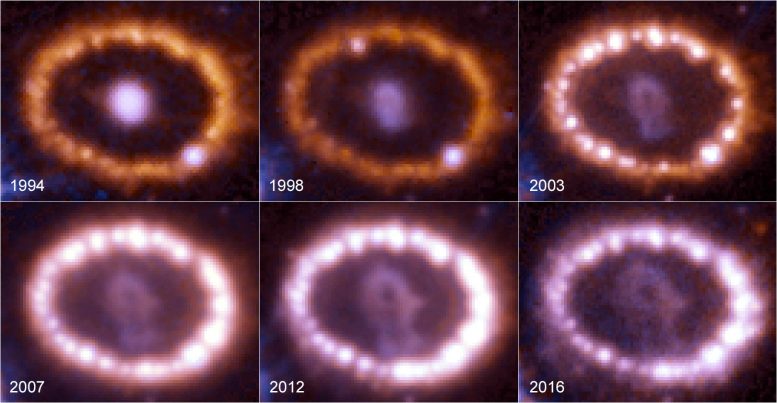
This montage shows the evolution of the supernova 1987A between 1994 and 2016, as seen by the NASA/ESA Hubble Space Telescope. The supernova explosion was first spotted in 1987 and is among the brightest supernova within the last 400 years. Hubble began observing the aftermath of the explosion shortly after it was launched in 1990. The growing number of bright spots on the ring was produced by an onslaught of material unleashed by the explosion. The shock wave of material hit the ring’s innermost regions, heating them up, and causing them to glow. The ring, about one light-year across, was probably shed by the star about 20,000 years before the star exploded. Credit: NASA, ESA, and R. Kirshner (Harvard-Smithsonian Center for Astrophysics and Gordon and Betty Moore Foundation) and P. Challis (Harvard-Smithsonian Center for Astrophysics)
To commemorate the 30th anniversary of SN 1987A, new images, time-lapse movies, a data-based animation based on work led by Salvatore Orlando at INAF-Osservatorio Astronomico di Palermo, Italy, and a three-dimensional model are being released. By combining data from NASA’s Hubble Space Telescope and Chandra X-ray Observatory, as well as the international Atacama Large Millimeter/submillimeter Array (ALMA), astronomers — and the public — can explore SN 1987A like never before.
Hubble has repeatedly observed SN 1987A since 1990, accumulating hundreds of images, and Chandra began observing SN 1987A shortly after its deployment in 1999. ALMA, a powerful array of 66 antennas, has been gathering high-resolution millimeter and submillimeter data on SN 1987A since its inception.
“The 30 years’ worth of observations of SN 1987A are important because they provide insight into the last stages of stellar evolution,” said Robert Kirshner of the Harvard-Smithsonian Center for Astrophysics in Cambridge, Massachusetts, and the Gordon and Betty Moore Foundation in Palo Alto, California.
Using computer simulations astronomers can visualize the development of the supernova 1987A, from its initial blast observed three decades ago to the luminous ring of material seen today: The sequence begins with the star before it exploded. A ring of material was expelled about 20 000 years before the actual supernova happened. A flash of light indicates the actual stellar explosion which sends a shock wave outwards. As this wave slams into the ring, knots of dense material become intensely heated and glow brightly, while was with lower density is blown outward. Credit: NASA, ESA, and F. Summers and G. Bacon (STScI)
The latest data from these powerful telescopes indicate that SN 1987A has passed an important threshold. The supernova shock wave is moving beyond the dense ring of gas produced late in the life of the pre-supernova star when a fast outflow or wind from the star collided with a slower wind generated in an earlier red giant phase of the star’s evolution. What lies beyond the ring is poorly known at present, and depends on the details of the evolution of the star when it was a red giant.
“The details of this transition will give astronomers a better understanding of the life of the doomed star, and how it ended,” said Kari Frank of Penn State University who led the latest Chandra study of SN 1987A.

Astronomers combined observations from three different observatories to produce this colorful, multiwavelength image of the intricate remains of Supernova 1987A. The red color shows newly formed dust in the center of the supernova remnant, taken at submillimeter wavelengths by the Atacama Large Millimeter/submillimeter Array (ALMA) telescope in Chile. The green and blue hues reveal where the expanding shock wave from the exploded star is colliding with a ring of material around the supernova. The green represents the glow of visible light, captured by NASA’s Hubble Space Telescope. The blue color reveals the hottest gas and is based on data from NASA’s Chandra X-ray Observatory. The ring was initially made to glow by the flash of light from the original explosion. Over subsequent years the ring material has brightened considerably as the explosion’s shock wave slams in it. Supernova 1987A resides 163,000 light-years away in the Large Magellanic Cloud, where a firestorm of star birth is taking place. The ALMA, Hubble, and Chandra images at the bottom of the graphic were used to make up the multiwavelength view. Credit: NASA, ESA, and A. Angelich (NRAO/AUI/NSF)
Supernovas such as SN 1987A can stir up the surrounding gas and trigger the formation of new stars and planets. The gas from which these stars and planets form will be enriched with elements such as carbon, nitrogen, oxygen, and iron, which are the basic components of all known life. These elements are forged inside the pre-supernova star and during the supernova explosion itself, and then dispersed into their host galaxy by expanding supernova remnants. Continued studies of SN 1987A should give unique insight into the early stages of this dispersal.
Some highlights from studies involving these telescopes include:
Hubble studies have revealed that the dense ring of gas around the supernova is glowing in optical light, and has a diameter of about a light-year. The ring was there at least 20,000 years before the star exploded. A flash of ultraviolet light from the explosion energized the gas in the ring, making it glow for decades.
The central structure visible inside the ring in the Hubble image has now grown to roughly half a light-year across. Most noticeable are two blobs of debris in the center of the supernova remnant racing away from each other at roughly 20 million miles an hour.
This video starts with a view of the night sky as seen from the ground and zooms in onto the Large Magellanic Cloud, a satellite galaxy of the Milky Way. A further zoom shows the remnants of the supernova explosion 1987A, nestled between red-colored gas, as they are seen by Hubble. The site of the supernova is surrounded by a ring of material that is illuminated by a wave of energy from the outburst. Two faint outer rings are also visible. All three of these rings existed before the explosion. Credit: NASA, ESA, and G. Bacon (STScI)
From 1999 until 2013, Chandra data showed an expanding ring of X-ray emission that had been steadily getting brighter. The blast wave from the original explosion has been bursting through and heating the ring of gas surrounding the supernova, producing X-ray emission.
In the past few years, the ring has stopped getting brighter in X-rays. From about February 2013 until the last Chandra observation analyzed in September 2015 the total amount of low-energy X-rays has remained constant. Also, the bottom left part of the ring has started to fade. These changes provide evidence that the explosion’s blast wave has moved beyond the ring into a region with less dense gas. This represents the end of an era for SN 1987A.
Astronomer Remy Indebetouw talks about the star that exploded in 1987, and how the world’s telescopes have been watching the explosion ever since. Credit: ALMA (ESO/NAOJ/NRAO)
Beginning in 2012, astronomers used ALMA to observe the glowing remains of the supernova, studying how the remnant is actually forging vast amounts of new dust from the new elements created in the progenitor star. A portion of this dust will make its way into interstellar space and may become the building blocks of future stars and planets in another system.
These observations also suggest that dust in the early universe likely formed from similar supernova explosions.
Astronomers also are still looking for evidence of a black hole or a neutron star left behind by the blast. They observed a flash of neutrinos from the star just as it erupted. This detection makes astronomers quite certain a compact object formed as the center of the star collapsed — either a neutron star or a black hole — but no telescope has uncovered any evidence for one yet.
These latest visuals were made possible by combining several sources of information including simulations by Salvatore Orlando and collaborators that appear in this paper: https://arxiv.org/abs/1508.02275. The Chandra study by Frank et al. can be found online at http://arxiv.org/abs/1608.02160. Recent ALMA results on SN 87A are available at https://arxiv.org/abs/1312.4086.
References:
“Supernova 1987A: a Template to Link Supernovae to their Remnants” by S. Orlando, M. Miceli, M.L. Pumo and F. Bocchino, 10 September 2015, The Astrophysical Journal.
DOI: 10.1088/0004-637X/810/2/168
arXiv: 1508.02275
“Chandra Observes the End of an Era SN 1987A” by Kari A. Frank, Svetozar A. Zhekov, Sangwook Park, Richard McCray, Eli Dwek and David N. Burrows, 21 September 2016, The Astrophysical Journal.
DOI: 10.3847/0004-637X/829/1/40
arXiv: 1608.02160
“Dust Production and Particle Acceleration in Supernova 1987A Revealed with ALMA” by R. Indebetouw, M. Matsuura, E. Dwek, G. Zanardo, M.J. Barlow, M. Baes, P. Bouchet, D.N. Burrows, R. Chevalier, G.C. Clayton, C. Fransson, B. Gaensler, R. Kirshner, M. Lakicevic, K.S. Long, P. Lundqvist, I. Marti-Vidal, J. Marcaide, R. McCray, M. Meixner, C.Y. Ng, S. Park, G. Sonneborn, L. Staveley-Smith, C. Vlahakis and J. van Loon, 17 January 2014, The Astrophysical Journal Letters.
DOI: 10.1088/2041-8205/782/1/L2
arXiv: 1312.4086

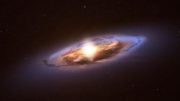
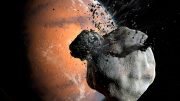
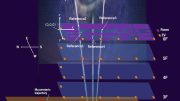

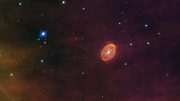
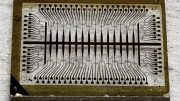

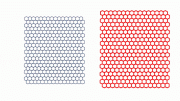
Star formation is one of the least comprehended phenomenon in astrophysics. Is there a general theory of star formation? No, there is not. There is a number of models based on computer simulations which include supersonic hydrodynamics with non-ideal MHD turbulence influenced by gravity. They include the line and continuum radiative processes of the energy transfer; a number of chemical processes with dissociation, recombination and ionization, with uncertain nomenclature of atoms and molecules, unknown magnetic fields and formation and destruction of dust particles. In addition there is macrophysics that is an environment in the molecular clouds, clumps and cores; inclusion in the multiple systems, collisions among stellar systems; jets and outflows; radiation pressure.